The Philodendron McColley’s Finale has a color palette that is reminiscent of a beautiful autumn day.
But this plant is more than beautiful, it is extremely easy to care for! Read on for this ultimate guide to the McColley’s Finale.
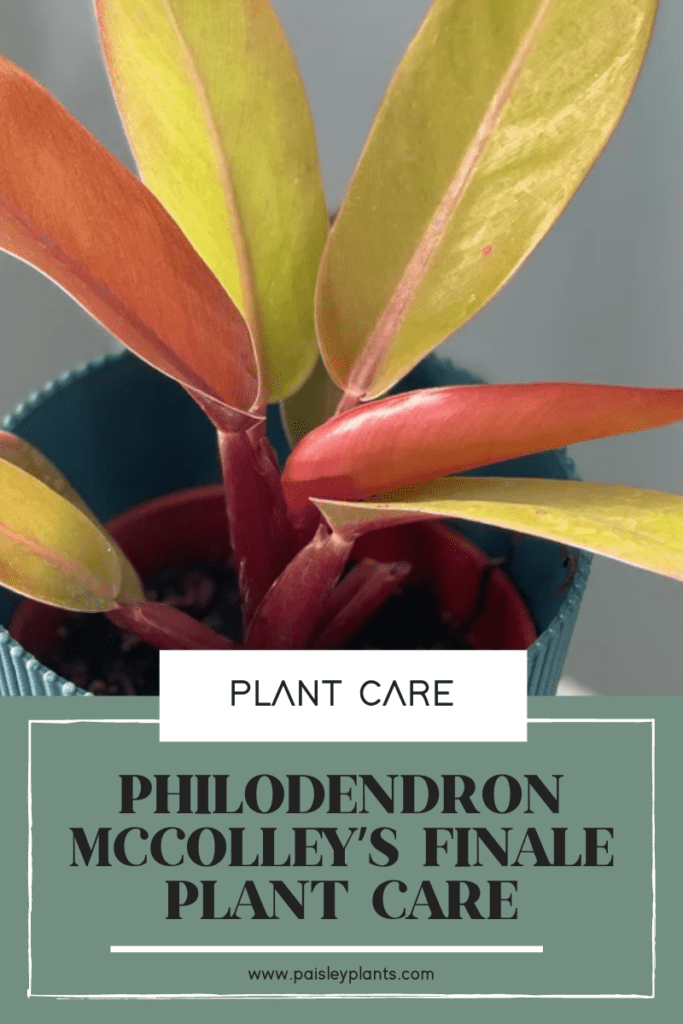
Image via Belle Decor Plants (Where you can purchase this plant!)
This post includes affiliate links.
Table of Contents
Background
The Philodendron ‘McColley’s Finale’ is a tropical hybrid belonging to the Philodendron genus. It was originally developed in Orlando, Florida. Another common name for this plant is the Cherry Red philodendron.
What makes the McColley’s Finale stand out the most is its beautiful leaf coloring. The leaves begin as a cinnamon, red hue and eventually turn deep green as the foliage matures.
All philodendrons are toxic to humans and animals. Philodendrons contain calcium oxalate crystals, which can cause severe gastrointestinal distress when consumed. It is best to keep these plants away if you have curious children and pets in the home.
Philodendron McColley Care
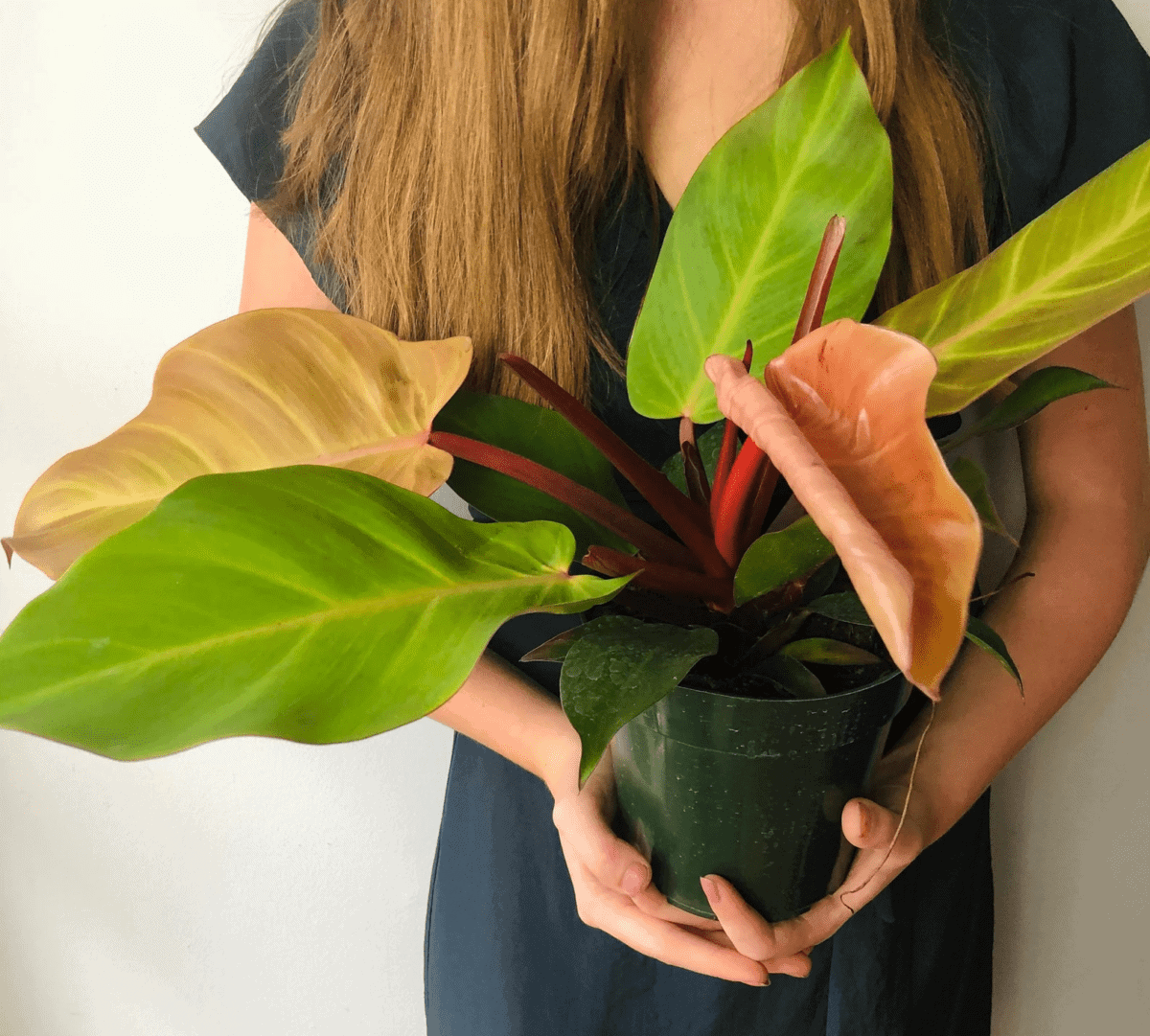
Image via Belle Decor Plants (Where you can purchase this plant!)
Sun & Light
Your philodendron will benefit from being exposed to bright indirect light. These plants can survive in low light conditions as well if bright light sources are not available.
Avoid any direct sunlight; direct sun can be too intense for your plant and cause the leaves to become damaged. Your better off putting your plant in a spot with lower light conditions than higher so you don’t burn your plant!
Soil Type
The perfect soil mixture for your McColley’s Finale is one that is moist, rich, and well-draining. A regular houseplant potting mixture will be more than suitable for this type of plant.
Avoid soils that are heavy, sandy, or clay-based. Your soil should be light enough for the root systems to easily grow uninterrupted. Aim for a pH level that is slightly acidic (5.5 to 6.5).
Water
The Philodendron McColley’s Finale prefers a soil that is lightly moist. A good rule of thumb for watering your plant is to wait until the first few inches of soil have dried up before rewetting the soil.
Be aware of your water level when it comes to your philodendron. Too much water can be counterproductive to your plant’s development, and increase the risk of your plant contracting root rot. Also make sure that your pot has a drainage hole so excess water can flow out.
Fertilizer
The ideal fertilizer to feed your McColley’s Finale with is a water soluble fertilizer that is specific to houseplants. Read the instructions on the package of your specific fertilizer and dilute half of the recommended dosage with water,
Feed your plant once a month throughout the growing season (spring and summer). Do not fertilize your plant in the fall and winter; during this time the plant is dormant and has no use for fertilization.
Temperature & Humidity
As with most tropical plants, the Philodendron McColley’s Finale enjoys warm, humid air climates. Aim for a temperature range that is somewhere in between 60° F to 75° F. Avoid allowing the air to dip lower than 50° F; avoid placing your plant near any drafty windows or air conditioning vents.
As for humidity, your philodendron will enjoy more humid conditions. Ideally, your home should have at least 50% humidity for a healthy plant. During the wintertime, it is important to keep your plants away from any heat vent.
These areas tend to be the driest, which can cause damage to your plant. If you are concerned about the humidity levels in your home, you can always supplement your plant with an electric humidifier.
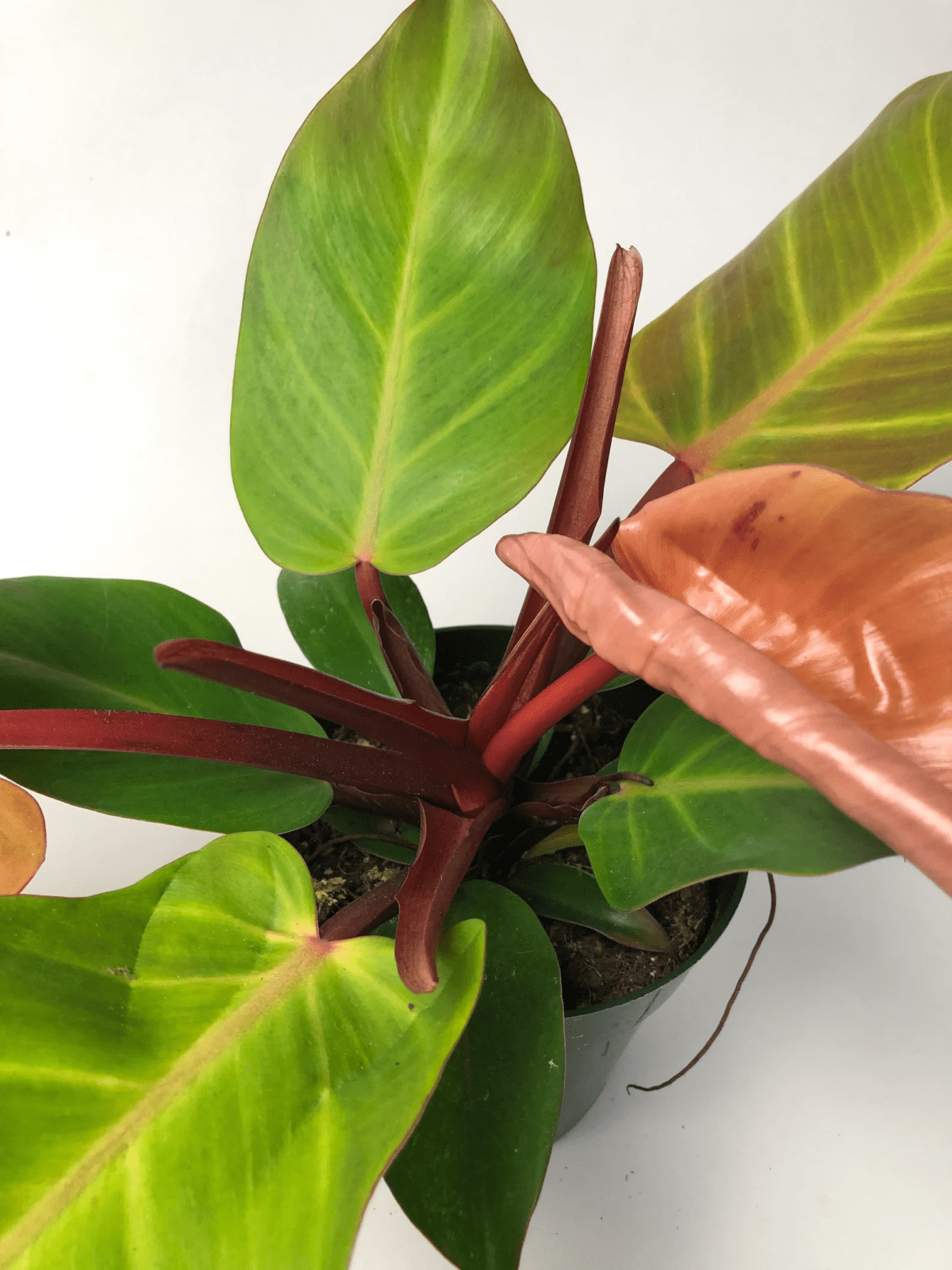
Image via Belle Decor Plants (Where you can purchase this plant!)
Pruning & Maintenance
Pruning is a necessary part of your philodendron’s care; regular pruning is the best way to maintain your plant’s appearance while also encouraging new growth. Prune your McColley’s Finale whenever you notice leaves that are damaged or dead. Yellow leaves are a sign they’re dying so those can also be removed. By removing these unneeded leaves, you’ll help your plant redirect its energy to developing new growth.
Philodendron McColley’s Finale plants are capable of being a climbing philodendron (albeit the plant does not grow very tall compared to other philodendron members). You can allow the plant to grow as it pleases. Most owners of this plant prefer to cut down their McColley’s Finale in order to maintain a “bushier” appearance. Some also
Choosing Pots & Repotting
When selecting a container for your McColley’s Finale, it is important to find a planter with ample drainage holes. Drainage holes are essential for keeping plants’ moisture level at a comfortable range. Excess water that goes unused can easily drain from the bottom, allowing the soil to be moist but not waterlogged.
You’ll find yourself needing to repot your philodendron around every 1 to 2 years depending on how quickly it grows. When repotting your plant, be sure to size up gradually to a pot size that is a few inches larger than the previous.
You plant loves to have loose roots, and not get too root bound. Loose roots will encourage your plant to grow tall and stay healthy.
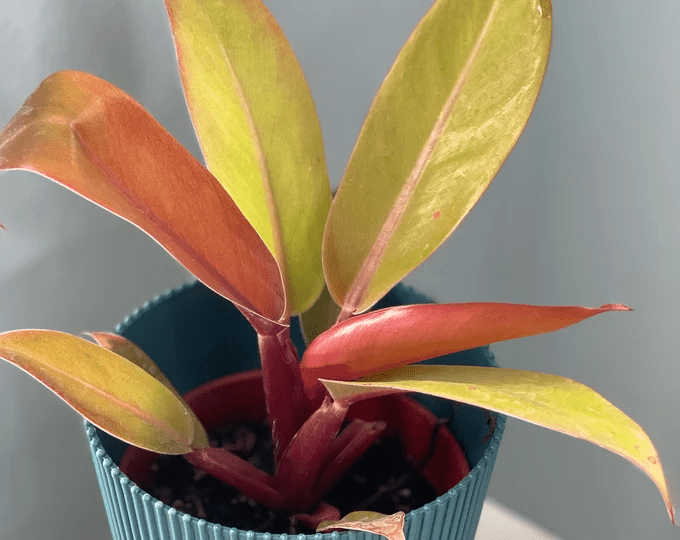
Image via Belle Decor Plants (Where you can purchase this plant!)
How to Propagate a McColley’s Finale Plant
Like many other philodendron plants, the Philodendron McColley’s Finale can be easily propagated by rooting the stems in water. This is one of the easiest propagation methods and is an inexpensive method of multiplying your plants.
Follow these simple steps to propagate your McColley’s Finale:
- Select a healthy portion of your plant to use. This section should be mature and have no obvious signs of damage. Select a stem that has at least one leaf and node.
- As an option, you can also dip the cut-end of the stem cuttings in hormone rooting powder. This is not a necessary step, but hormone rooting powder greatly increases the chances of a successful propagation.
- Fill a small jar with water and place the stem in the jar. Make sure that the cut-end of the stem is reaching the bottom of the jar and is completely submerged. The leaves should be above the water, which allows for air circulation.
- Change out the water every week in order to prevent bacterial build-up. It takes around 3-4 weeks for roots to form from the cutting.
- Wait until the roots are at least 1 inch in length before transferring the cutting into a pot of soil. Fill the pot using the same type of soil you would use for a mature plant- rich, well-draining, and moist.
- After transferring the cutting into its new pot, make sure to keep the soil evenly moist for the next few weeks. Due to the transfer, the juvenile plant may experience some transplant shock; a moist soil will help lessen the effects of it.
- The best signs that the plant has started to root in the soil is new growth, so be on the lookout for new leaves. You can also try giving the stem a light tug; if you’re met with any resistance, that means that the stem has started establishing roots in the soil!
Common Pests
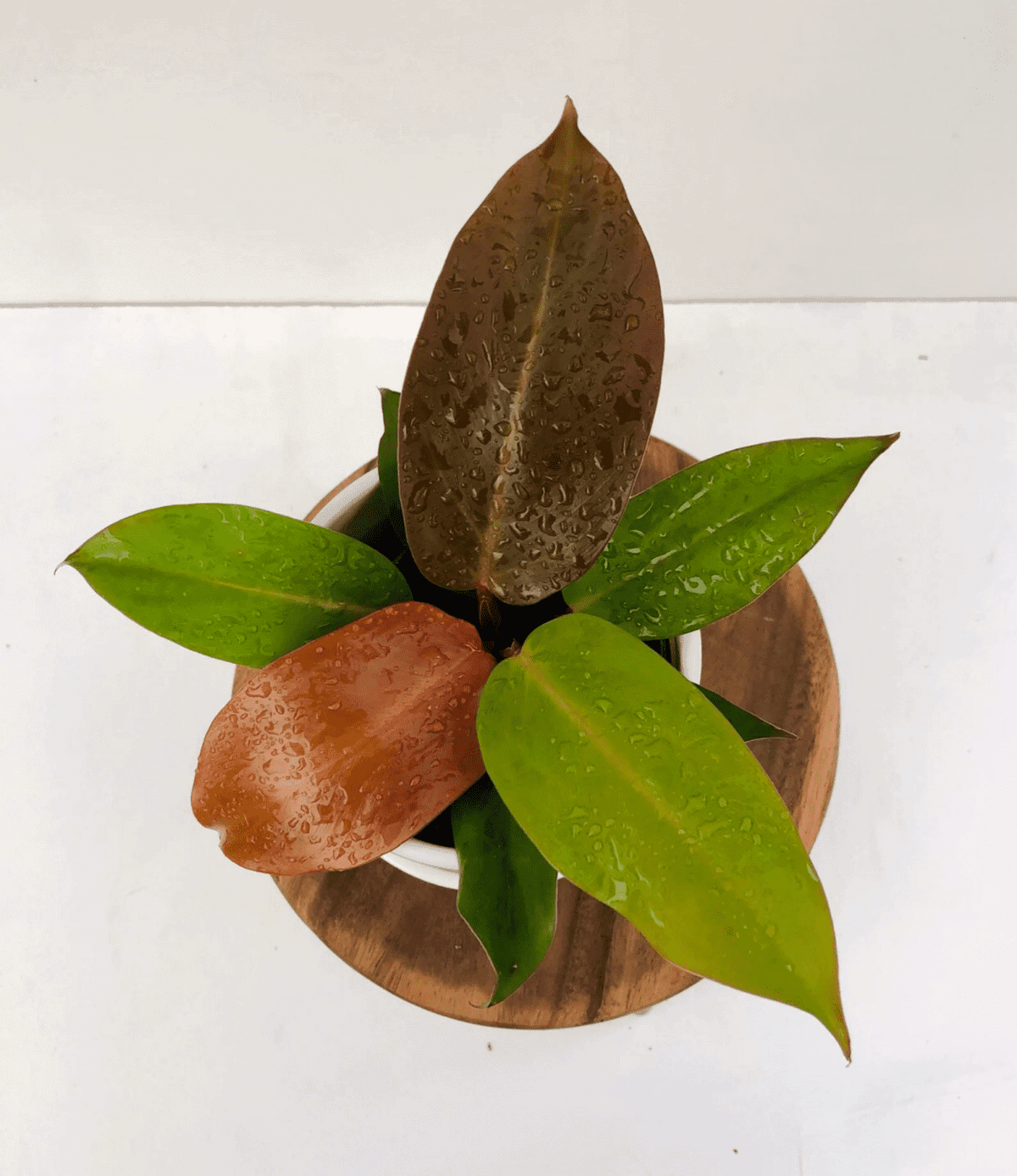
Image via Belle Decor Plants (Where you can purchase this plant!)
Spider mites, aphids, scale, and mealybugs are a few examples of possible pests that might attack your McColley’s Finale. These pests are sometimes referred to as sapsuckers; pests that latch onto the foliage of your plant to suck out the nutrients in them. Their presence causes discolored patches and dying foliage on affected plants.
Luckily, these pests can be swiftly dealt with when caught early. Keep in mind the easiest way to stop pests from ever attacking your plant is by keeping them healthy; it is known that pests are least likely to attack a plant that is strong and healthy.
Most pests can be exterminated utilizing natural oils such as neem oil. Plant owners swear by spraying their afflicted plants with a few rounds of neem oil and wiping the foliage with it. Bear in mind that this method involves repeating a few times to ensure the population has been totally eradicated.
Some pests (namely mealybugs) also leave sticky cotton-like residue on the affected plant which can be cleared away by wiping the affected area with rubbing alcohol.
Common Diseases
One of the most common diseases that affects many houseplants is root rot. Root rot is an extremely common occurrence amongst plant owners. It is primarily caused by too much moisture in the soil combined with insufficient drainage.
The excess moisture that is trapped within the root system can cause the roots of the plant to corrode and rot, which will slowly kill the plant itself. If your philodendron is wilting and discolored, these are clear signs of root rot.
Luckily, root rot can be easily treated as long as it is caught early. Follow these steps in order to treat your plant:
- Remove the plant from its pot and inspect the root system. Rotten roots are soft in texture and have turned near-black from the rot.
- Using a sterile pair of shears, cut away at all signs of rot.
- When all rot has been cleared, repot your plant in a sterile plant pot that has multiple drainage holes. Fill the planter with a well-draining soil.
- For the next couple of weeks, keep the soil lightly moist; this helps mitigate the effects of transplant shock.
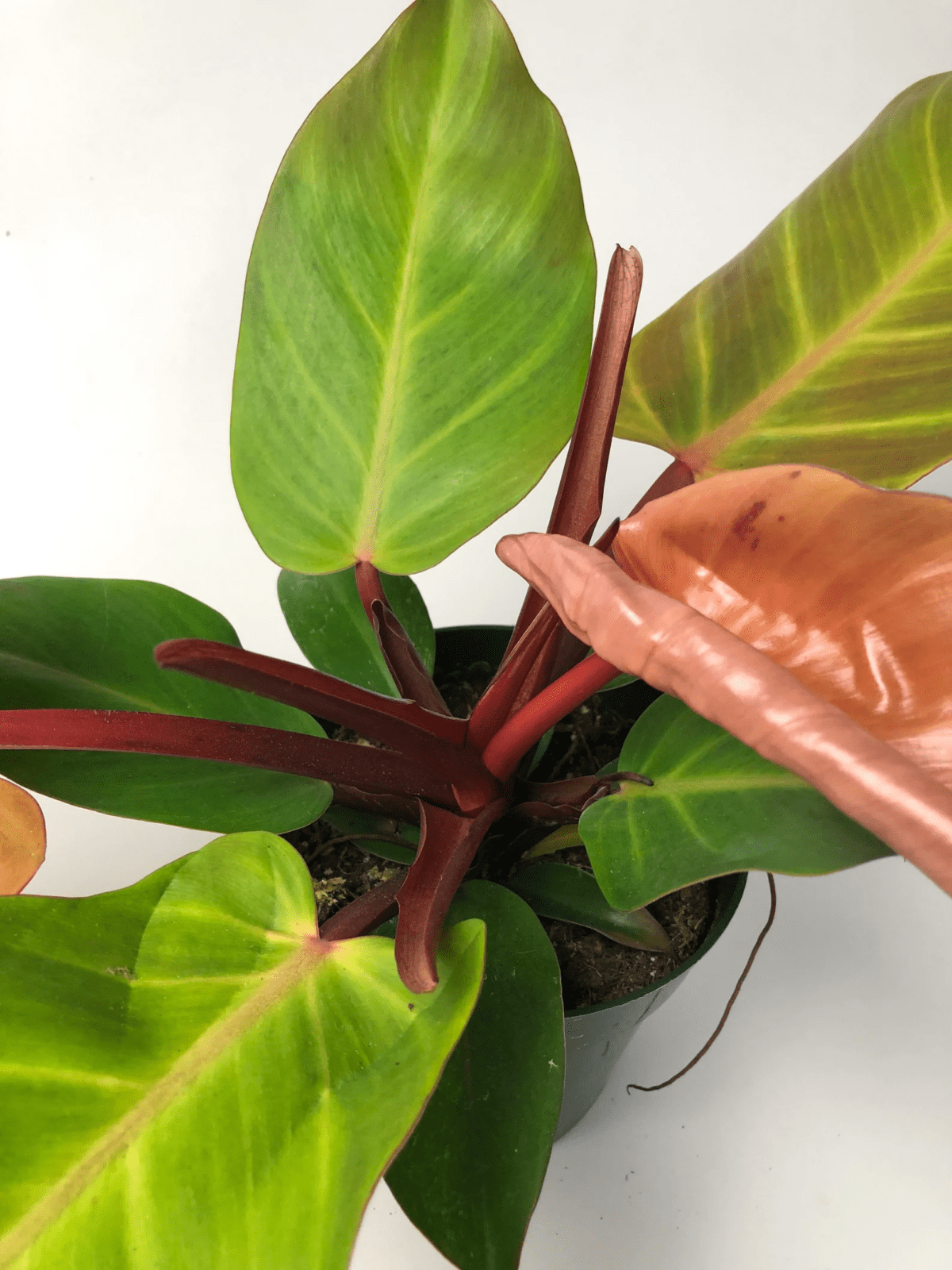
Image via Belle Decor Plants (Where you can purchase this plant!)
McColley’s Finale vs Prince of Orange
Compared to other philodendrons, the McColley’s Finale is considered to be one of the smaller philodendrons. On average, this plant reaches only 20 inches in height at its full maturity; though some have reported their plant reaching up to 36 inches.
This plant is sometimes confused with the Prince of Orange Philodendron. While they have many similarities the main difference is in the new leaves. You’ll find wide, red new leaves on the McColley’s Finale while you’ll find orange and elongated leaves on the Prince of Orange.
If you want to learn more about the Philodendron Prince of Orange, head here!
Where to Buy
FAQ
he McColley’s Finale is considered one of the rarer species of philodendron; you are unlikely to find these plants on sale at your local name-brand garden center. However, there are multiple sellers on the internet.
On the bright side, propagating a McColley’s finale is very easy. Once you get your hands on one plant, you can use it to propagate many more.
A Philodendron McColley is one of the smaller species of philodendron. At full maturity, you can expect your plant to reach a height of 20 inches tall. However, in some exceptional cases, your plant may grow to 3 feet tall.
In Conclusion
I hope this care guide helps you in having a better idea how to keep your plant happy and healthy! Like many other members of its genus, the McColley’s Finale is one of the easiest, low maintenance houseplants there is.
However, its beautiful tones, different colors and rarity make it a sought-after houseplant. If you’re lucky enough to own this great plant, we’re certain you’ll love it forever.

